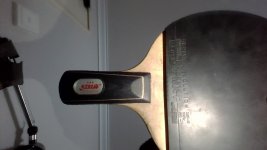This user has no status.
This user has no status.
Well-Known Member
I don't have too much money to spend on TT, but I've played with a ton of blades and rubbers by borrowing them from club mates. I also spend a lot of time reading about equipments (because I don't want to spend too much money). And I reached the conclusion that the scientific approach won't work. It can give you clues about an equipment how it might work, but it can't replace trying the equipment.
Last edited:











